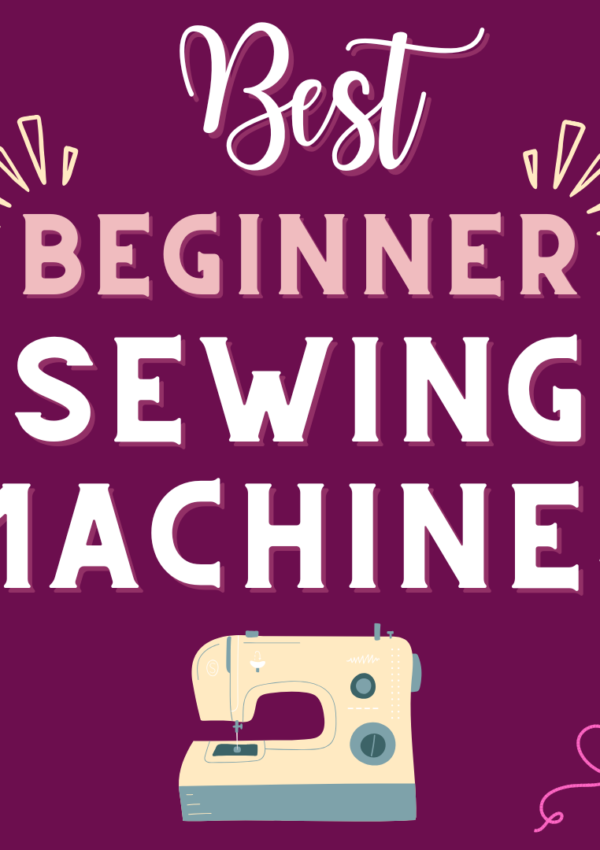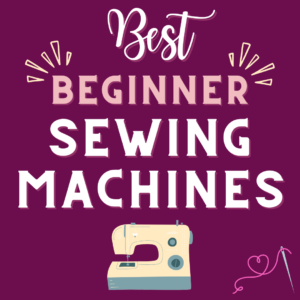Sewing is one of the most useful skills you can choose to learn. In this article, I’ll share essential tips to make your sewing experience as enjoyable as possible in the beginning.
Like all things worth doing in life, sewing gets easier and better with time if you are willing to put in the effort. It might feel a little scary or challenging at the start, but I promise it is all worth it to stick with it until it feels like a second nature skill.
Alright, let’s just jump into the secrets that all beginner sewers should know!
1 – Start with Hand Sewing
Sewing by hand teaches you how to develop a sewing brain. Consider sewing by hand an optional prerequisite to sewing with a sewing machine. Anything you do on a sewing machine, you can sew by hand.
My sewing machine started when I ordered a sewing machine from Walmart on a whim for $45. Ten years prior, I had bought a ~$100 beginner sewing machine that I never could quite figure out how to use.
A decade later now, I decided I was ready to try again with more patience to learn. Still, there was a knot in my stomach with nervousness over whether I could figure out how to use a sewing machine this time or not.
As a warm up, I decided to start with sewing by hand. My first project was a strawberry pin cushion. I figured that it would be simple, a little cute, and at least useful.
Through it, I learned to appreciate the strength of thread, the variety of different stitches, and the convenience of sewing machines.
It was just enough to give me the confidence to learn how to sew with a sewing machine because I was immediately hooked on being able to create something handmade myself.
Every new sewer should do a few hand-sewn projects to get familiar and comfortable with working with fabrics, needles, and thread.
2 – Find Sewing Patterns to follow
Once you discover sewing patterns, you realize there is an easy mode to sewing projects.
Instead of trial and error, sewing patterns lay out all of the pieces you need along with instructions for the construction of an item.
You could think of sewing patterns as the equivalent to recipes in cooking.
Usually printed at home on A4 letter paper or at a printing shop on A0 posters, patterns provide traceable stencils for all of the fabric pieces you’ll need for a particular project.
Sewing patterns simplify the entire process of sewing for you by taking care of all of the necessary measuring and planning.
Not all sewing patterns are created equally however, so do read reviews to find well-written and beginner-friendly patterns to start with.
The very first pattern I chose was a bunny stuffed animal that I wanted to make for my son as we were wanted to transition away from polyester stuffed animals. It was not a beginner-friendly pattern and I almost abandoned it because I was struggling to attach the tiny arms… I ended up modifying the body to be a straight tube.
Luckily, my son is 2 and loved it anyways.
The next patterns I bought were dresses, which I will write reviews on soon after I create a few. 🙂
3 – Get Cheap Fabric to Practice with guilt-free
Buying fabrics is one REALLY FUN part of sewing. But there is nothing more nerve-wrecking than cutting into expensive, beautiful fabric that you absolutely do not want to ruin.
Instead, buy some cheap easy-to-sew with fabrics, such as cotton calico. Every few weeks, all of the fabrics at Hobby Lobby goes on sale for 40% off. You can find many beautiful colors and prints for as cheap as $3 a yard. I was able to get an entire bolt of fabric I liked around $20.
Cheap fabric makes mistakes forgivable and you can see you first few projects as great learning experiences. Learning to work with fabric and a sewing machine is its own reward when you don’t have to worry about “wasting” nice fabric you cherish.
So keep your eyes out for fabric sales and get some nice cheap stock for ample practice.
4 – Sewing with a Sewing Machine is more so Guiding the Fabric
On that note, you should really understand that sewing is a lot more about understanding how the fabric will react with a sewing machine and adequately guiding it to its proper position for beautiful sewing.
In the same way dancing is an art, so is sewing on a sewing machine. There is a fluidity to the movement that you must learn to emulate.
There is no better way than to simply practice it yourself, with your cheap practice fabric!
Use your machine. Be okay with imperfections in the beginning as long as you’re learning in the process. Seam rip when you need to. You will get better inevitably!
5 – Don’t cut corners
Learn to do things right and strive to hold yourself to good standards. You might be slow in the beginning, but you will get better with repetitions so do it right every time to ingrain in yourself good habits.
In the sewing community, you’ll notice that many seamstresses say that they “pay attention to all the details.” That is because sewing is a craft and all artists learn to appreciate good craftsmanship. Sewists develop an eye for noticing the finest of details.
Develop a sewing brain by learning proper ways to do all the different possibilities in sewing.
6 – Inspect your favorite items for how they are sewn
Whether it is clothing garments, household decor, or bags, please become an inspector to see the hidden in plain sight threads that hold together the fabric of everything around you.
This will help you to develop an eye for professional finishes. You will see what is possible to emulate and work towards one day making yourself.
7 – Keep sewing until it feels second nature to you
Your sewing journey starts off daunting and scary, but due to the law of equivalent exchange, you will get better as you put in more effort to improve and develop your sewing skills.
Just keep sewing. Keep creating. Not every project will turn out perfect, and that is perfectly a-okay as long as you’re learning and having fun along the way.
Sooner than later you will feel like sewing is easier and easier. Please enjoy. 🙂


